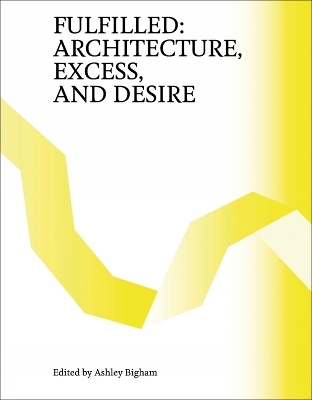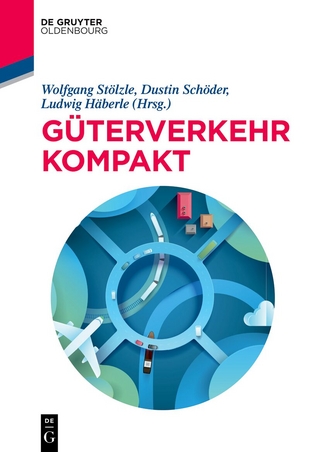
Fulfilled
Architecture, Excess, and Desire
Seiten
2022
Oro Editions (Verlag)
978-1-951541-64-4 (ISBN)
Oro Editions (Verlag)
978-1-951541-64-4 (ISBN)
Featuring contributions from more than a dozen contemporary architects, Fulfilled: Architecture, Excess, and Desire presents an unparalleled and multidisciplinary exploration into the ways tangible and intangible fulfilment have shaped modern architecture.
Based on the eponymous symposium and exhibition, Fulfilled: Architecture, Excess, and Desire considers the role of architecture in a culture shaped by the excessive manufacturing and assuagement of desire. Until the term became synonymous with Amazon warehouses, the concept of fulfilment described the achievement of a desire - sometimes tangible, often psychological or spiritual. With the rapid growth of e-commerce, our understanding of fulfilment has evolved to reflect a seemingly endless cycle of desire and gratification - one whose continuity hinges on our willingness to overlook the cultural, economic, and environmental impacts of our ever-increasing expectation of quick and efficient fulfilment. A closer look at fulfilment reveals a social, typological, formal, aesthetic, and economic practice constructed collectively through both digital and physical interactions. It is a cultural practice which evolves like a language, both universally transferable and contextually specific. As a symposium, exhibition, and now publication, this project aims to draw out these new arrangements, sticky relationships, and material by-products of cultural production and to ask again the age-old question, “What does it mean to be fulfilled?”
This book examines the architecture of fulfilment through three lenses: logistical, material, and cultural fulfilment. Each reveals the new forms of architectural practice and research that are possible, typical, and even surreptitiously encouraged in the age of Amazon. Fulfilment networks are not invisible systems; they are tangible objects - warehouses, suburban houses, parking lots, cardboard boxes, shopping malls, mechanical systems, shipping containers - with which architects necessarily interact. From political mapping and questions of labour to digital and physical storage typologies, contemporary architects learn from and work critically within the architecture of fulfilment. Their interests and approaches include the material and environmental shortcomings of global logistics and the formal, representational, and cultural potentials of a culture of excess. This book highlights architecture’s unique capacity to offer methodologies for confronting an increasingly ambiguous, alienating world and produce new knowledge and unexpected solutions that go beyond the dichotomies of rural and urban territories.
Featuring new texts and visual work by more than a dozen contemporary architects: Ana Miljački – Boston, MA; Ang Li – Boston, MA; Ashley Bigham – Columbus, OH; Cristina Goberna Pesudo – Madrid, Spain; Curtis Roth – Columbus, OH; Jesse LeCavalier – Toronto, Canada; John McMorrough – Ann Arbor, MI; Keith Krumwiede – San Francisco, CA; Laida Aguirre – Ann Arbor, MI; Leigha Dennis – New York, NY; Lluís Alexandre Casanovas Blanco – Barcelona, Spain; Michelle Chang – Boston, MA; Miles Gertler – Toronto, Canada; Mira Henry & Matthew Au (Current Interests) – Los Angeles, CA
Based on the eponymous symposium and exhibition, Fulfilled: Architecture, Excess, and Desire considers the role of architecture in a culture shaped by the excessive manufacturing and assuagement of desire. Until the term became synonymous with Amazon warehouses, the concept of fulfilment described the achievement of a desire - sometimes tangible, often psychological or spiritual. With the rapid growth of e-commerce, our understanding of fulfilment has evolved to reflect a seemingly endless cycle of desire and gratification - one whose continuity hinges on our willingness to overlook the cultural, economic, and environmental impacts of our ever-increasing expectation of quick and efficient fulfilment. A closer look at fulfilment reveals a social, typological, formal, aesthetic, and economic practice constructed collectively through both digital and physical interactions. It is a cultural practice which evolves like a language, both universally transferable and contextually specific. As a symposium, exhibition, and now publication, this project aims to draw out these new arrangements, sticky relationships, and material by-products of cultural production and to ask again the age-old question, “What does it mean to be fulfilled?”
This book examines the architecture of fulfilment through three lenses: logistical, material, and cultural fulfilment. Each reveals the new forms of architectural practice and research that are possible, typical, and even surreptitiously encouraged in the age of Amazon. Fulfilment networks are not invisible systems; they are tangible objects - warehouses, suburban houses, parking lots, cardboard boxes, shopping malls, mechanical systems, shipping containers - with which architects necessarily interact. From political mapping and questions of labour to digital and physical storage typologies, contemporary architects learn from and work critically within the architecture of fulfilment. Their interests and approaches include the material and environmental shortcomings of global logistics and the formal, representational, and cultural potentials of a culture of excess. This book highlights architecture’s unique capacity to offer methodologies for confronting an increasingly ambiguous, alienating world and produce new knowledge and unexpected solutions that go beyond the dichotomies of rural and urban territories.
Featuring new texts and visual work by more than a dozen contemporary architects: Ana Miljački – Boston, MA; Ang Li – Boston, MA; Ashley Bigham – Columbus, OH; Cristina Goberna Pesudo – Madrid, Spain; Curtis Roth – Columbus, OH; Jesse LeCavalier – Toronto, Canada; John McMorrough – Ann Arbor, MI; Keith Krumwiede – San Francisco, CA; Laida Aguirre – Ann Arbor, MI; Leigha Dennis – New York, NY; Lluís Alexandre Casanovas Blanco – Barcelona, Spain; Michelle Chang – Boston, MA; Miles Gertler – Toronto, Canada; Mira Henry & Matthew Au (Current Interests) – Los Angeles, CA
Ashley Bigham is an assistant professor of Architecture at the Knowlton School of Architecture and co-director of Outpost Office. She is a former Walter B. Sanders Fellow at the University of Michigan’s Taubman College, a MacDowell Fellow, and a Fulbright Research Fellow in Lviv, Ukraine.
| Erscheinungsdatum | 14.06.2022 |
|---|---|
| Verlagsort | San Rafael |
| Sprache | englisch |
| Maße | 177 x 228 mm |
| Gewicht | 506 g |
| Themenwelt | Kunst / Musik / Theater |
| Geisteswissenschaften ► Psychologie | |
| Technik ► Architektur | |
| Wirtschaft ► Betriebswirtschaft / Management ► Logistik / Produktion | |
| Wirtschaft ► Betriebswirtschaft / Management ► Marketing / Vertrieb | |
| ISBN-10 | 1-951541-64-2 / 1951541642 |
| ISBN-13 | 978-1-951541-64-4 / 9781951541644 |
| Zustand | Neuware |
| Haben Sie eine Frage zum Produkt? |
Mehr entdecken
aus dem Bereich
aus dem Bereich
Grundlagen - Spezialthemen - Übungen
Buch | Softcover (2022)
Springer Gabler (Verlag)
39,99 €


